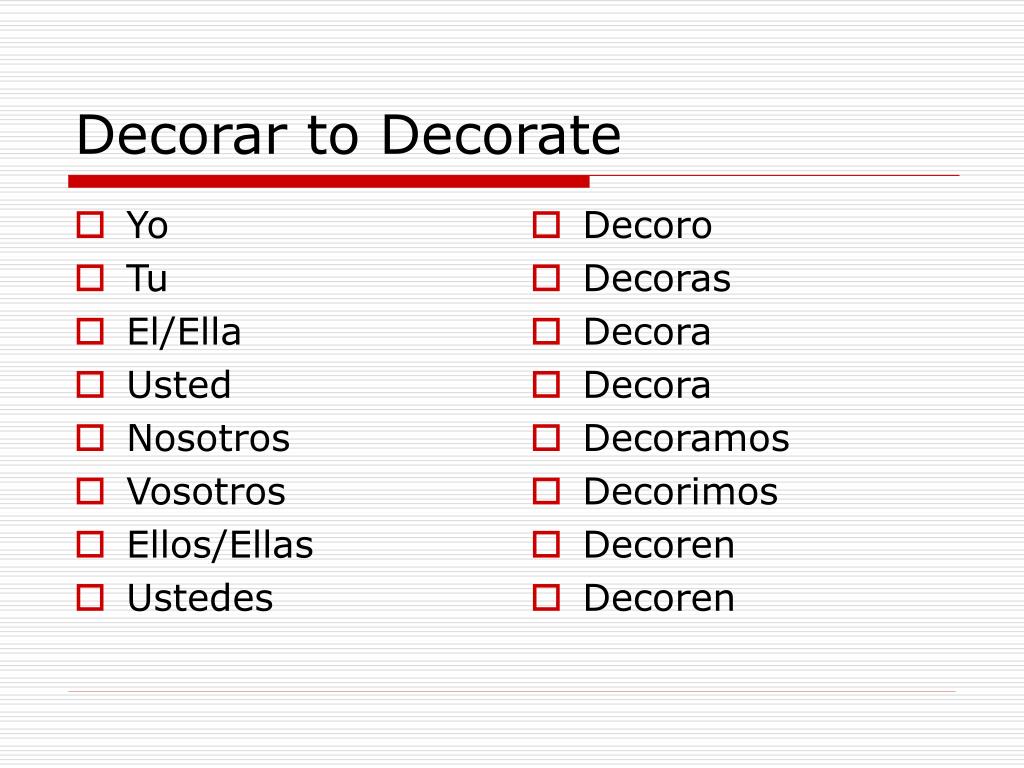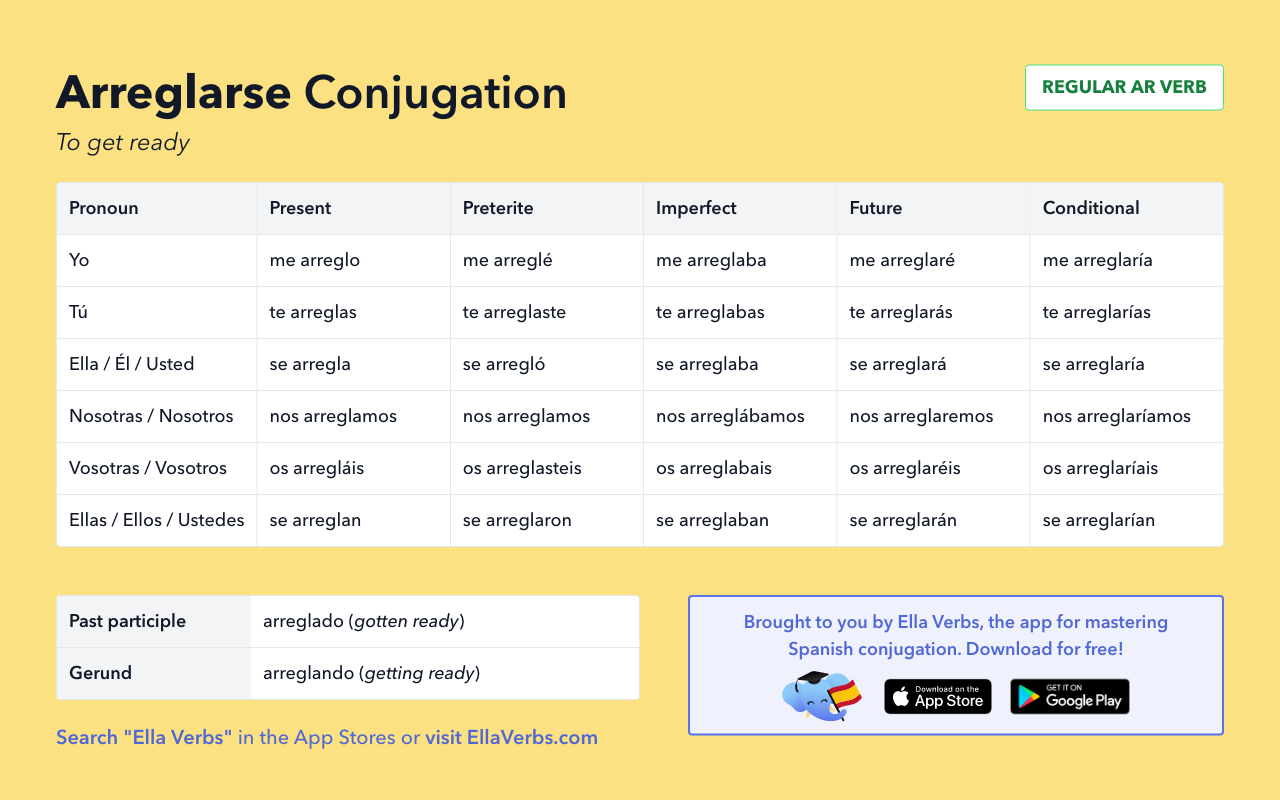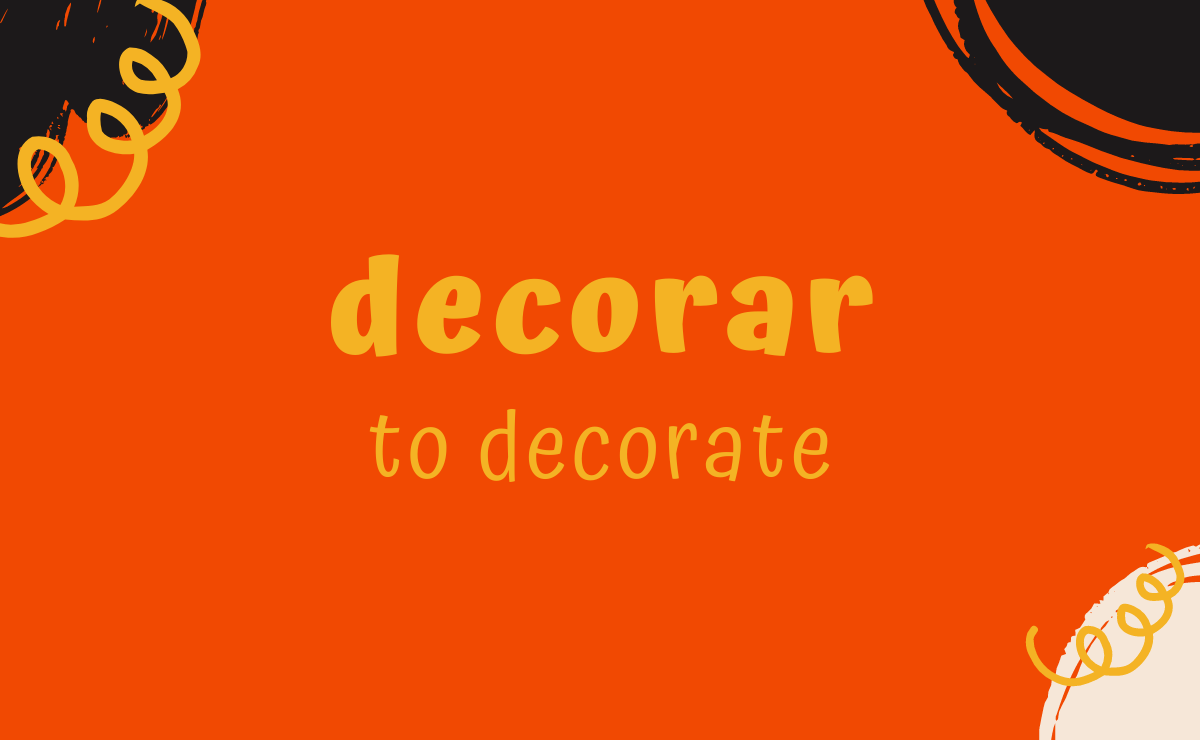Welcome to the ultimate guide on the conjugation of the Spanish verb decorar! Whether you’re a student of Spanish, a teacher, or simply someone who loves to embellish their communication with this beautiful language, you’re in the right place. In this article, we’ll explore everything you need to know about the verb ‘decorar’, from its basic forms to its more complex variations, sprinkled with personal insights and tips from my own learning journey.
Understanding the Verb ‘Decorar’
The verb decorar means “to decorate” in English. It is a regular -ar verb, making its conjugation relatively straightforward compared to irregular verbs in Spanish. Decorar is commonly used in both everyday conversation and more formal contexts. Let’s dive into its conjugation across different tenses.
Basic Conjugation Patterns
To get started, understanding the present, past, and future tenses is crucial. Below is a table summarizing these key conjugations.
| Tense | Yo (I) | Tú (You) | Él/Ella/Usted (He/She/You Formal) | Nosotros (We) | Ellos/Ellas/Ustedes (They/You Plural) |
|---|---|---|---|---|---|
| Present | decoro | decore | decora | decoramos | decoran |
| Preterite | decoré | decoraste | decoró | decoramos | decoraron |
| Imperfect | decoraba | decorabas | decoraba | decorábamos | decoraban |
| Future | decoraré | decorarás | decorará | decoraremos | decorarán |
A Deep Dive into Tenses

Present Tense Usage
The present tense is vital for everyday conversations. It’s used to describe actions that are currently happening or habitual actions. For instance:
Yo decoro la casa para las fiestas (I decorate the house for the holidays).
Past Tenses: Preterite vs. Imperfect
In Spanish, the past tense can be expressed in two ways: the preterite and the imperfect. The preterite is used for completed actions, whereas the imperfect describes ongoing or habitual actions in the past.
Preterite Examples
Ellos decoraron la sala la semana pasada (They decorated the living room last week).
Imperfect Examples
Cuando era niño, siempre decoraba la casa para Navidad (When I was a child, I always decorated the house for Christmas).

Future Tense: Looking Ahead
The future tense allows you to talk about actions that will happen, making it a great tool for planning.
Nosotros decoraremos para el cumpleaños de Maria (We will decorate for Maria’s birthday).
Subjunctive Mood: Expressing Desire and Uncertainty
The subjunctive mood is crucial in Spanish and is used to express wishes, doubts, or hypothetical situations. Here’s how to conjugate ‘decorar’ in the present subjunctive.
| Subject | Conjugation |
|---|---|
| Yo | decore |
| Tú | decoren |
| Él/Ella/Usted | decore |
| Nosotros | decoramos |
| Ellos/Ellas/Ustedes | decoren |

Common Expressions with ‘Decorar’
Understanding how to use ‘decorar’ in phrases can significantly enhance your conversational abilities. Here are some frequent expressions:
- Decorar con amor (Decorate with love)
- Decorar el espacio (Decorate the space)
- Decorar para una ocasión especial (Decorate for a special occasion)
Pros and Cons of Learning ‘Decorar’ and Related Conjugations
Pros
- Enhances verbal communication skills.
- Helps in expressing creativity and personal style.
- Essential for social gatherings and celebrations.

Cons
- May be challenging to remember all conjugations.
- Using subjunctive forms can be tricky for learners.
Personal Experiences with ‘Decorar’
Throughout my language learning journey, ‘decorar’ has played a significant role. Whether it’s planning for a festive gathering or simply decorating my room, mastering this verb allowed me to express my individuality. I recall a specific moment when I decorated for a friend’s birthday. The joy and satisfaction I felt while saying, “Voy a decorar la casa,” is something I cherish. It’s not just about the verb; it’s about the connections we make.

Frequently Asked Questions (FAQs)
What is the meaning of ‘decorar’?
The verb ‘decorar’ translates to ‘to decorate’ in English and is used to describe the act of adding decorations or embellishments.
Is ‘decorar’ an irregular verb?
No, ‘decorar’ is a regular -ar verb, meaning it follows the standard conjugation patterns for -ar verbs in Spanish.
How do you say ‘I decorated’ in Spanish?
‘I decorated’ translates to ‘yo decoré’ in the preterite tense.

Conclusion: Embrace the Art of Decorating with ‘Decorar’
As you can see, mastering the conjugation of ‘decorar’ opens avenues to express creativity and share joy in various contexts. With practice, you’ll find yourself confidently using this verb in conversation. Don’t forget—language learning is a journey filled with moments of enjoyment and personal growth. So, go ahead, decorate your Spanish language skills with ‘decorar’!